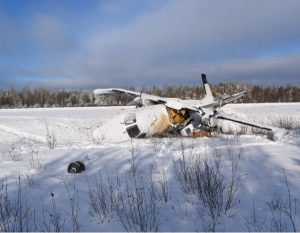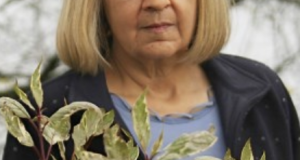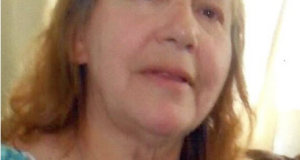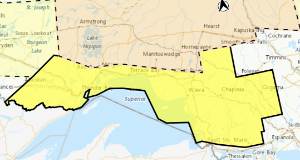Today, the Transportation Safety Board of Canada (TSB) released its investigation report (A23O0155) into the 27 November 2023 runway excursion involving a Mitsubishi MU-2B-60 aircraft operated by Thunder Airlines Limited, at the Wawa Aerodrome, Ontario.
The TSB conducted a limited-scope, class 4 investigation into this occurrence to advance transportation safety through greater awareness of potential safety issues.
Air transportation safety investigation report A23O0155Runway excursion
Thunder Airlines Limited
Mitsubishi MU-2B-60, C-GYUA
Wawa Aerodrome (CYXZ), Ontario
The Transportation Safety Board of Canada (TSB) investigated this occurrence for the purpose of advancing transportation safety. It is not the function of the Board to assign fault or determine civil or criminal liability.
This report is not created for use in the context of legal, disciplinary or other proceedings. See Ownership and use of content.
History of the flight
On 27 November 2023, the flight crew of the Mitsubishi MU-2B-60 aircraft (registration C-GYUA, serial number 1553 S.A.), operated by Thunder Airlines Limited, was preparing for instrument flight rules (IFR) flight THU890 from Thunder Bay Airport (CYQT), Ontario, to Sault Ste. Marie Airport (CYAM), Ontario. The flight included a stop at Wawa Aerodrome (CYXZ), Ontario, to pick up a patient for a medical transfer to CYAM. This flight was not a MEDEVACFootnote 1 flight.
As part of the pre-flight preparations, one of the flight crew members contacted CYXZ at 0549Footnote 2 to check the runway conditions and spoke with an aerodrome employee who was on duty for after-hour inquiries. During the call, the flight crew member learned of ongoing light snowfall and understood that the runway would be plowed by about 0730.
At approximately 0653, during the hours of darkness, the aircraft departed CYQT for CYXZ with 2 flight crew members and a paramedic on board. The cruise portion of the flight was uneventful. The flight crew maintained radio contact with air traffic control (ATC) and received clearance for the approach to CYXZ. At about 0726, ATC instructed the flight crew to switch to the Wawa aerodrome traffic frequency (ATF).
Between 0715 and 0730, aerodrome staff, including the employee to whom the flight crew member had spoken and a trainee, arrived at CYXZ. An ambulance carrying the patient who would be transferred also arrived at the aerodrome in that time.
It had snowed overnight, and aerodrome staff were aware of the potential arrival of flight THU890, but had not yet plowed the runway. The staff began their morning duties, which included preparing the snow removal vehicles to clear the runway. There was no radio communication between aerodrome staff and the occurrence flight crew.
The approach to CYXZ occurred during civil twilight,Footnote 3 before sunrise. The flight crew activated the runway lights using the aircraft radio control of aerodrome lighting system and performed the RNAV (GNSS) [area navigation (global navigation satellite system)] approach to Runway 03. They visually spotted the runway when they were about 10 nautical miles away on final approach.
As the aircraft approached the runway, the flight crew had a clear view of the runway lights and saw that the runway was covered in snow. The aircraft touched down on Runway 03 at 0739, and shortly after, it suddenly began sliding to the right. The flight crew attempted to correct this using rudder pedals, as well as differential propeller and power control, but were unsuccessful. The aircraft rotated almost 180° before sliding off the runway’s right side.
The aircraft continued sliding sideways off the runway while facing the opposite direction of landing and came to rest on its left side in a drainage ditch, about 78 feet from the runway’s edge. The aircraft was extensively damaged; the right engine propeller blades penetrated the cabin before the engines were shut down.
After the engines were shut down, the occupants began evacuating. The right emergency exit was damaged and would not open, so they egressed through the aircraft’s main door, which was located at the rear, on left side of the aircraft. A significant fuel leak was noted. The occupants walked the short distance to the runway, where the snow was between 6 to 8 inches deep on the runway surface. The flight crew called 911 and the London Flight Information Centre (FIC) to report the accident.
The aerodrome staff observed the aircraft land and slide off the runway. They drove the snow removal vehicle down the runway, plowing snow along the way. They stopped to check on the occupants and then continued down the remaining runway length before turning around at the end and continuing to plow snow back toward the terminal building. Another vehicle transported the aircraft occupants to the terminal building, where they were assessed by emergency medical services and then transported to the local hospital for examination. There were only minor injuries.
Flight crew information
The aircraft was being flown by 2 captains: a captain in charge and a captain in training.
The captain in charge, who was the pilot-in-command (PIC) of the flight, was sitting in the right seat and performing the pilot monitoring duties. He had accumulated approximately 2058 total flight time hours, including about 184 hours on the occurrence aircraft type.
The captain in training did not meet the company requirement for hours to be PIC on medical flights. He was sitting in the left seat and was performing the pilot flying duties. The captain in training had accumulated approximately 1984 total flight time hours, including 44 hours on the occurrence aircraft type.
Both flight crew members held the appropriate licences for the flight in accordance with existing regulations and had valid medical certificates.
Weather information
The aerodrome routine meteorological report issued at CYXZ at 0700 indicated winds from 240° true (T) at 4 knots, visibility of 1 statute mile in light snow, a broken ceiling at 2200 feet above ground level (AGL), temperature −5 °C, and dew point −7 °C.
A special meteorological report issued at 0741 indicated winds from 310°T at 8 knots, visibility of 3 statute miles in light snow, overcast ceiling at 2500 feet AGL, temperature −6 °C, and dew point −8 °C.
Although only light snow was reported as falling during the occurrence, there had been a significant accumulation of snow the previous evening and overnight.
Aircraft information
The Mitsubishi MU-2B-60 is a high-wing turboprop aircraft with a pressurized cabin and is powered by 2 engines that are mounted on the wings. In addition to the flight crew seats, the occurrence aircraft was configured with 3 passenger seats in the cabin and 1 stretcher. It was primarily used for medical flights.
There were no recorded defects outstanding at the time of the occurrence. There was no indication that a component or system malfunction played a role in this occurrence. The aircraft’s weight and centre of gravity were within the prescribed limits.
The occurrence aircraft was not equipped with a cockpit voice recorder or a flight data recorder, nor was either required by regulation. However, the aircraft was equipped with a GPS (global positioning system)Footnote 4 and an electronic horizontal situation indicator,Footnote 5 which were sent to the TSB Engineering Laboratory in Ottawa, Ontario, for examination.
The aircraft was also equipped with an automatic dependent surveillance – broadcast (ADS-B) transponder unit. Data was obtained from NAV CANADA after the occurrence. The data plotted the aircraft’s track, including time and altitudes from the time of departure from CYQT to the occurrence site at CYXZ.
Occurrence site and wreckage examination
The investigation was unable to determine the aircraft’s exact touchdown point because the runway was plowed immediately after the occurrence. However, based on the available data, it was estimated that the aircraft touched down between 1000 feet and 1400 feet beyond the runway threshold, and began to slide to the right shorty after. The aircraft continued sliding to the right and rotated nearly 180° while on the runway surface. The aircraft then exited the side of the runway at an angle of about 45° to the runway edge.
After leaving the runway surface, the aircraft continued to slide for another 171 feet before coming to rest in a drainage ditch, about 78 feet from the runway edge, and approximately 1600 feet from the threshold of Runway 03.
During the impact with the drainage ditch, the aircraft’s nosewheel was torn off and the aircraft rolled over onto its left side, causing the one-piece wing to be lifted upwards. The wing detached from the fuselage but rested on top of it (Figure 1).
The emergency exit on the right side of the fuselage was damaged and blocked by the wing. The outboard ends of the right engine propeller blades penetrated the fuselage by about 18 inches, cutting an extensive gap into the fuselage (Figure 2).
Aerodrome information
General
CYXZ is a registered aerodromeFootnote 6 operated by the Corporation of the Municipality of Wawa, and located about 1.7 nautical miles south of Wawa, Ontario. The single runway (Runway 03/21) has an asphalt surface that is 4429 feet long and 98 feet wide.
The aerodrome staff consists of 3 employees, plus the aerodrome manager. The 3 employees are on rotational weekly shifts (1 person on shift per day). The hours are generally from 0730 to 1600.
According to the Canada Flight Supplement (CFS), CYXZ has an ATF (frequency 122.8 MHz), which is an approach UNICOMFootnote 7,Footnote 8 that is operational for limited hours.Footnote 9 The aerodrome also has a remote communications outlet (RCO) frequency for London FIC, and a peripheral station (PAL) for Toronto Centre.
Using the RCO or PAL, flight crews can request specific information, such as weather and runway conditions. Also, in remote operations, such as CYXZ, flight crews can request the London FIC flight service specialist to contact the destination aerodrome by telephone to obtain updated runway information; however, this service is dependent on the priority of services being provided and the ability of the specialist to contact the aerodrome operator. Therefore, the service may not always be available.
According to the Wawa Airport Manual, the aerodrome must provide a runway service report to the London FIC every morning (once every 24 hours).Footnote 10 At the time of the occurrence, a report had not yet been provided to the London FIC. The previous day’s report, taken at 0800 on 26 November 2023, indicated the runway was 100% covered in snow with a maximum depth of ¾ inch.
Aerodrome lighting
The runway edge, threshold, and end lights at CYXZ are mounted on posts, which elevate them about 30 inches above the runway surface. As a result, the lights remain visible as long as the accumulation of snow is less than 30 inches.
Radios
The plow vehicles were equipped with very high frequency (VHF) radios, but the drivers did not hear the flight crew’s calls, nor did they attempt to call the flight crew after seeing the aircraft on final approach. The garage and the terminal building also have VHF radios; however, they do not have outdoor speakers for the radios. In addition, the terminal building does not always have staff inside because employees are often working outside.
According to the Wawa Airport Manual, when staff are outside of the terminal building, they are required to carry one of the aerodrome’s portable VHF aircraft radios and ensure it is turned on with the volume at high and on the correct frequency.Footnote 11 These portable radios are stored in the terminal building; however, the investigation determined that aerodrome staff do not regularly carry the radios with them when they are out of the building. At the time of the occurrence, none of the staff had a radio with them.
Snow removal
With respect to snow removal, the Wawa Airport Manual states the following:
Removal of snow and cleaning banks will take priority during the winter months, remove the snow off the runway as soon as possible, sometimes it is required that you stay later than schedule or come in earlier than schedule so that you can clear the runway from snow.Footnote 12
It is up to the discretion of the employee on duty when to plow the runway after hours. There are no requirements to plow the runway using specific snow depths or other conditions, only that it should be plowed as soon as possible.
Communications
The investigation determined that there was a miscommunication between the flight crew and the aerodrome staff with respect to when the runway would be plowed. The flight crew believed that the runway would be plowed before their arrival, but the aerodrome staff only planned to have the runway plowed by 0900.
The Thunder Airlines Limited company operations manual stipulates the following:
Instrument approach procedures shall not terminate in a landing unless prior to landing, the pilot-in-command ascertains by means of a radio communication or visual inspection:
- i) the condition of the intended landing surface; and
- ii) the wind direction and speed.Footnote 13
After departure from CYQT, the flight crew communicated with the appropriate ATC unit for IFR operations during the flight. The flight crew received updated weather conditions along the route; however, there were no current runway reports, or pilot weather reports for CYXZ.
The Wawa ATF is not recorded, but it was reported that the flight crew first broadcast their intentions on this frequency about 12 minutes before landing and made subsequent transmissions afterwards. However, the flight crew did not attempt to contact anyone on the ground at CYXZ using radios, nor did they call the London FIC for assistance in getting runway conditions from CYXZ. The flight crew believed they had the appropriate information regarding runway conditions.
During the approach, the flight crew could see the runway lights. Although there was limited daylight, the crew saw snow on the runway but believed it to be light snow, as reported by the aerodrome employee.
The aerodrome employee saw the lights of the approaching aircraft but did not attempt to contact the pilots. The ambulance driver asked whether the plow driver was going to plow the runway before the aircraft landed, but the plow driver intended to plow after the aircraft landed.
Safety action taken
Shortly after the occurrence, Thunder Airlines Limited issued an operations bulletin to all flight crews, indicating that no flight crew shall depart until there is confirmation of suitable runway conditions (maximum ½ inch wet snow or 2 inches dry snow) from reliable sources on the ground. In addition, the bulletin states that if the communicated information includes a plan to clear the runway, confirmation of a cleared runway must be obtained before landing. The bulletin will be incorporated in the Thunder Airlines Limited standard operating procedures in the next revision.
Safety messages
In remote aerodrome operations, aerodrome operators, pilots, and air carriers need to establish effective communications, so that arriving flight crews are aware of important aerodrome information.
It is important that flight crews are aware of actual runway conditions before landing to ensure the landing can be accomplished safely.
This report concludes the Transportation Safety Board of Canada’s investigation into this occurrence. The Board authorized the release of this report on . It was officially released on .
- Batchewana FN & Alamos Gold Begin Next Phase of the Mine Connector Transmission Project - December 16, 2025
- Mixed Curling Standings – December 13 - December 13, 2025
- Ladies Curling Standings – December 12th - December 12, 2025
 Wawa-news.com You can't hear the 'big picture'!
Wawa-news.com You can't hear the 'big picture'!




